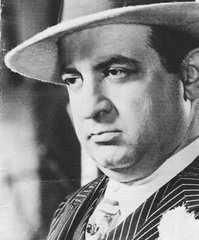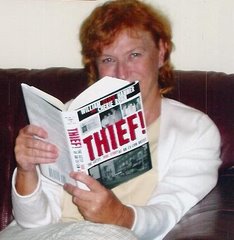

A Black & White Casino
The Moulin Rouge (Red Mill) hotel and casino, named after a famous Parisian nightclub that featured cancan dancers, was located in West Las Vegas. It opened on May 24, 1955, built at a cost of $3.5 million. It’s listed on the United States National Register of Historic Places as the first desegregated hotel and casino.
During the 1950s and 1960s Las Vegas was totally segregated. Even famous black entertainers were refused entry into the Strip’s hotels and casinos. Black actress, Dorothy Dandridge, defied the rules and dipped a toe in the hotel pool where she was performing. Within a short time the pool was drained.
Investors Will Max Schwartz, Louis Rubin and Alexander Bisno teamed up with black boxing great, Joe Louis, to build the history-making casino at 900 West Bonanza Road. The Moulin Rouge’s strategic location on the West side of Las Vegas, near where the black population was forced to live, made it a unique draw to liberals and those who just wanted great entertainment no matter what color the performer was. By the way, the unique Moulin Rouge sign was created by Betty Willis who also created the “Welcome to Las Vegas” sign.
Today it’s hard to believe that at one time Las Vegas wouldn’t allow blacks in establishments unless they were working. But black and whites alike became so fed up with the shabby treatment that the Moulin Rouge became an instant success, thereby ruffling the feathers of other casino owners.
A month after its opening, Life Magazine featured the Moulin Rouge on the front page. A veritable "A" list of performers regularly showed up to party until dawn. Great black singers and musicians such as Sammy Davis Jr., Nat King Cole, Pearl Bailey, and Louis Armstrong would perform often. As I said, these artists were banned from staying or even gambling at the Strip hotels and casinos. In addition, white performers, including George Burns, Jack Benny, and Frank Sinatra, would routinely drop in after their shows to gamble and perform at the Moulin Rouge. Eventually management added a 2:30 a.m. "Third Show" to accommodate the crowds.
Unfortunately, the Moulin Rouge closed November 24, 1955. Its short life helped the Civil Rights movement in Las Vegas by making Sarann Knight-Preddy, onetime owner of the Moulin Rouge, the first black woman to hold a Nevada gaming license.
The list of white entertainers who fought for black rights in Las Vegas is stacked with important names. Frank Sinatra and Marlene Dietrich were two of many who refused to perform on the Strip unless black performers had the same privileges as whites. True to his word, Sinatra threatened to take The Rat Pack out of the Sands unless Carl Cohen allowed Sammy Davis, Jr. the same rights as whites. Sinatra got his way. Efforts such as these finally brought an end to segregation in Las Vegas.
There were plans to reopen the Moulin Rouge but after three fires in four years, in 2009 it shut its doors for good. All that remains is an empty lot and the Moulin Rouge sign designed by Betty Willis.



No comments:
Post a Comment